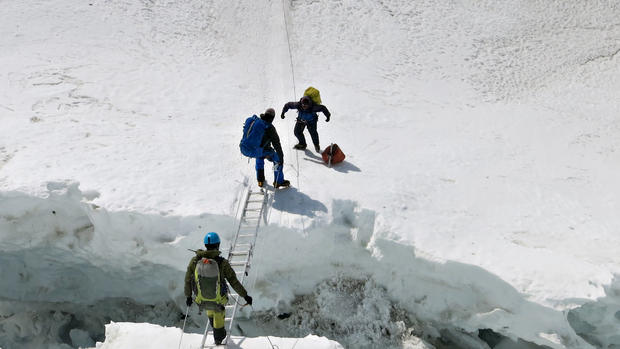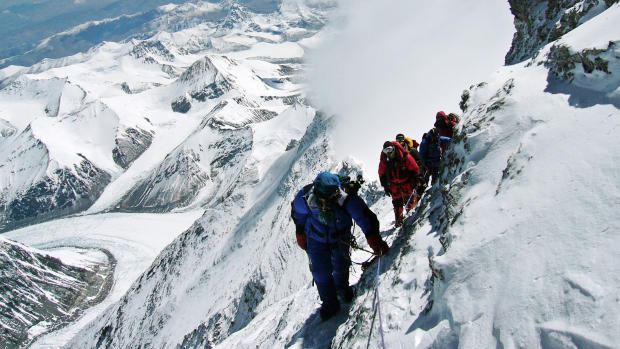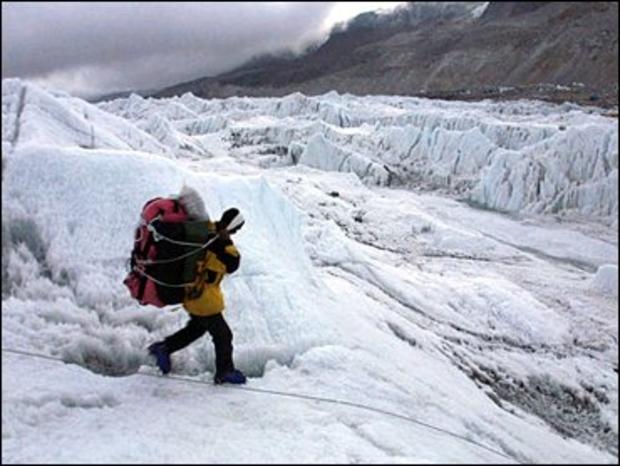The mountain of problems facing Everest
After six deaths this climbing season, members of the Mount Everest community are calling for change on the world's tallest peak.
In interviews, individuals with knowledge of this year's climbing season describe a perfect storm of factors -- from dismal government oversight to a surge of inexperienced climbers to subpar expedition operators -- that, combined, have set the stage for unnecessary deaths.
Everest is plagued by a glut of inexperienced climbers who push themselves too hard, Ang Tshering, president of the Nepal Mountaineering Association, said. He grew up on the route to Mount Everest, and as a child several of his relatives worked as mountain guides. To date, Tshering has provided training for more than 180 Everest expedition teams, he said.
The situation is exacerbated when these climbers work with low-quality, unregulated expedition operators who don't speak out when their clients aren't prepared for the mountain's brutal conditions; meanwhile, these low-cost operators often compromise on the quality of their equipment and emergency training, Tshering said.
In the end, everyone -- foreign climbers and the local guides that accompany them -- suffer.
"If [the climbers] are not capable, they risks others' lives as well," he said.
There are no rules in place requiring climbers to have a certain level of experience before attempting to summit Everest.
So far this season, 400 climbers have made the attempt. In addition to the six confirmed deaths, more than 30 people have reportedly fallen ill with frostbite and other ailments stemming from the mountain's intense conditions.
The 2016 season was supposed to be a comeback of sorts for the world's tallest peak, and the local economy that surrounds it. Tragic circumstances derailed climbing in both 2014 and 2015. In 2014, climbing was canceled after an avalanche killed 16 sherpas; at the time, it was the deadliest event in Everest's history. In 2015, climbing was again canceled after a massive 7.8 magnitude earthquake caused another avalanche that killed 19; across the country, that earthquake left nearly 9,000 dead and 600,000 homes destroyed.
In general, the risk of death on Everest is higher for the local Himalayans who guide wealthy climbers on their expeditions, since they're weighed down by heavy gear. Filmmaker Jen Peedom directed the documentary "Sherpa," which looks at Mount Everest from the point of view of these guides. The documentary is currently on the festival circuit; it recently screened at the Telluride Film Festival and Toronto International Film Festival and won Best Documentary at the London Film Festival.
"It's often the inexperienced climbers putting the sherpas' lives at risk," Peedom said. She advocates for a minimum wage to ensure sherpas are paid commensurate with the extraordinary risk they're taking.
In general, rules and regulations on the world's tallest mountain are "fairly nonexistent," the filmmaker added; if anything, concerned climbers and expedition operators are left scrambling to fill the void left by government officials and establish safety norms.
Overcrowding is another concern in recent years on Everest. Though this year's climbing season was not as crowded as expected, large crowds have in the past created bottlenecks that keep climbers in low-oxygen danger zones as they wait for the path to clear to ascend or descend the mountain. The more time climbers spend in these zones, the higher the risk of frostbite and deadly altitude sickness. (At least three of this season's deaths are reportedly tied to altitude sickness.)
Despite the danger, there are no checks in place to prevent overcrowding.
"The Nepalese government has no real incentive to limit the numbers. Every person who goes to Everest pays a $10,000 permit fee. They're keen to get that money," Peedom said.
A way forward
For years, members of the climbing community have been vocal about ways to make Mount Everest safer. These proposals range in scope and feasibility.
For starters, authorities could mandate smaller teams to reduce traffic jams and monitor and cap the weight of sherpas' loads to improve their chance of survival in case of an avalanche.
For Tshering, Nepal also urgently needs to crack down on low-cost expedition operators.
"Low-paying means low quality of services: low quality of skill, man power. It's a risk. People must not look only at prices," he said. "Safety and security is most important."
To limit the number of inexperienced climbers, Nepal could limit the number of permits, raise permit fees, or require interested climbers to successfully climb a similarly challenging mountain -- say 23,000 feet -- elsewhere in the country first.
"I think you'd get rid of about one-third of people," Peedom said of this idea. "Who knows how your body is going to perform at this altitude? It's a very arduous thing to do. That [idea] would have the advantage of adding money to Nepal and would give the climbers more experience."
Everest's political reality
Political instability lies at the heart of the problems facing Everest.
The Nepalese government is "never stable," Tshering said. He described a political environment in which expedition operators often identify and recommend reforms to officials, but ultimately little changes because those in power are constantly rotating. This has been the status quo for the past 15 years, he said.
"The ministers and secretaries are often changing, and before they understand something they've already changed," he said. "Every time a minister tries to do something, that minister changes. And a minister who knows nothing about tourism comes. This is one of the most difficult parts of life here."
Peedom echoed those sentiments, saying she's observed individuals who've lobbied for change only to hit wall after wall.
"You can spend a year lobbying [government officials], and three weeks later they're out of a job. There's a lot of turmoil and turnover in that government," Peedom said.
Everest is crucial to how Nepal sells itself as a destination to the world.
"If Everest can't be safely managed for tourists, the country's reputation as a whole suffers," columnist Adam Minter recently wrote in Bloomberg View.
The situation is not without any hope. Expedition operators, for instance, recently spoke out against the dangers sherpas face navigating the "ice fall," an especially dangerous stretch of the mountain, which Peedom compares to "playing Russian Roulette." In the end, operators successfully lobbied the government to authorize helicopters to carry loads over the ice fall.
For now, there are a few more days to this climbing season before June, which can bring rain, clouds and monsoons to the mountain. Tshering, for one, is hopeful that next year's climbing season "will be much better." His company is already fielding inquiries from interested climbers, he said.
In general, interest in climbing Everest is not waning anytime soon, Peedom said.
"It has an extraordinary hold over so many imaginations. It's a very powerful metaphor, especially for Westerners."


